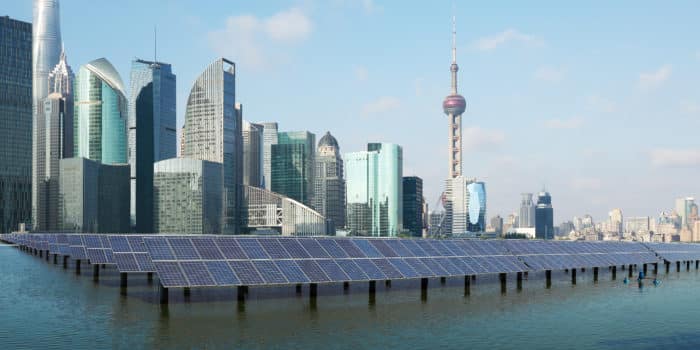Despite a difficult year clouded by western investors’ flight to developed markets, The Climate Impact Asia Fund (CIAF) strategy significantly outperformed all the regional market indices. These achievements demonstrate that investing in the Climate Impact theme within Asian equities can be both profitable and non-correlated investment opportunity in its own right.
In 2021, countries around the world have been blasted by a relentless assault of weather disasters linked to global warming in recent years, including record-shattering wildfires across Australia and Siberia, a once-in-1000-years heatwave in North America and extreme rainfall that caused massive flooding in Asia, Africa, the US and Europe. In its latest annual assessment, the Copernicus Climate Change Service (C3S) confirmed that 2021 had joined the unbroken warm streak since 2015 and found that last year was the fifth warmest on record globally, marginally warmer than 2015 and 2018
Over the year, over 57 million people were affected by climate disasters across Asia Pacific according to the International Federation of Red Cross and Red Crescent Societies (IFRC). South Asia has been the worst hit, with millions of people affected by multiple disasters and little time to recover from one to the next.
• In India, more than 18 million people have been severely impacted by floods and cyclones this year, according to data from the Indian Government, Disaster Management Division. In Bangladesh, more than half a million people have been swamped by floods, with hundreds of villages marooned for weeks at a time. Around one third of Nepal suffered floods or landslides with many occurring outsides of the traditional monsoon season.
• In China’s Henan Province, 13.9 million people were affected by severe flooding in July.
• In Southeast Asia, Indonesia has been worst affected by disasters, with more than one million people swamped by floods in the past month alone, according to the Indonesian Government Regional Disaster Authority. Drought, combined with associated economic collapse – which unfolds slowly but with devastating consequences – is affecting more than 22.8 million people in Afghanistan, according to the latest Integrated Food Security data.
• Other countries across Asia have also been hit by multiple disasters. Nearly one million people were swamped by flooding in Thailand, more than half a million people affected by floods and typhoons in the Philippines and over 125,000 people hit by floods in Myanmar. Pacific Island countries also faced significant flooding due to storms and rising sea tides.
In November, Milltrust attended COP26 in Glasgow which will be remembered as a watershed moment for global collaborative efforts to combat climate change with crucial decisions and pledges having been made on resolving key outstanding elements of the Paris Agreement related to finance and Article 6 on carbon trading, breakthroughs with respect to forests and land use with pledges to halt and reverse forest loss and land degradation by 2030 while delivering sustainable development and promoting an inclusive rural transformation, a more holistic integration of themes such as biodiversity and natural capital, and the decision by the Parties to the United Nations Framework Convention on Climate Change to improve their nationally determined contributions and climate pledges. However, some disappointments lingered in that the 1.5C goal remain far off and that parties have not unanimously agreed to phase out unabated coal power and fossil fuel subsidies.
Despite these disappointments, Asia remains well positioned to address these challenges and capture the opportunities that come from managing climate risk effectively:
• Infrastructure and urban areas are still being built out in many parts of Asia, which gives the region a chance to ensure that what goes up is more resilient and better able to withstand heightened risk. At the same time, key economies in the region, such as China and Japan, are leading the world in technologies, from electric vehicles to renewable energy, that are necessary to adapt to and mitigate climate change.
• Asia is uniquely positioned to accelerate coal decarbonisation, given its critical mass of regional production capacity and scale to drive down the cost of renewables. Furthermore, about half of global investment in power by 2040 is expected to occur in Asia. At the same time, the power sector accounts for about 35 percent of the region’s total CO2 emissions, and 90 percent of those emissions come from coal (compared to 70 percent globally).
• The industrial sector is the largest greenhouse gas emitter in Asia, accounting for more than 35 percent of the region’s annual CO2 emissions. Furthermore, Asia’s ratio of industrial greenhouse gas emissions per unit of GDP is about 60 percent higher than the global average. Today, Asia generates about 80 percent of global CO2 emissions in the steel and cement industries. Consequently, structural shifts within these two industries in Asia are critical to success in decarbonising the world’s industrial sector.
• Decarbonising agriculture in Asia and preventing deforestation is also a significant mitigation opportunity; agriculture and deforestation combined account for 10 percent of CO2 emissions in Asia and more than 40 percent of CH4 emissions. Furthermore, methane emissions from agriculture alone in Asia account for almost 20 percent of global total methane emissions. Key strategies to reduce emissions in this sector include promoting a shift from a diet rich in animal protein to plant-based protein, improving farming practices (such as dry direct seeding, improved rice paddy water management, and improved fertilisation of rice), and promoting sustainable forestry (ending deforestation and scaling reforestation).
• More than 30 percent of global CO2 emissions from transportation and buildings comes from Asia. At the same time, Asia is a leader in technology such as electric vehicles and fuel cell vehicles (EVs and FCVs). Strategies to decarbonise in the transportation sector include improving the fuel efficiency of internal combustion engine (ICE) vehicles, EV and FCV penetration in multiple vehicle types, and decreasing the distance driven by road transportation (for example, with a shift to public transportation and ride sharing).
Much of Asia is already responding to the adaptation and mitigation challenges of climate change. By building on those efforts, sharing best practices, and galvanising support, Asia is emerging as a leader in one of the most monumental challenges facing the world, the key investment thesis which The Climate Impact Asia Fund is based on. The time to act is now!
Sources: Refinitiv, Reuters, Milltrust Research, Credit Suisse, IFRC, France24, C3S, McKinsey




